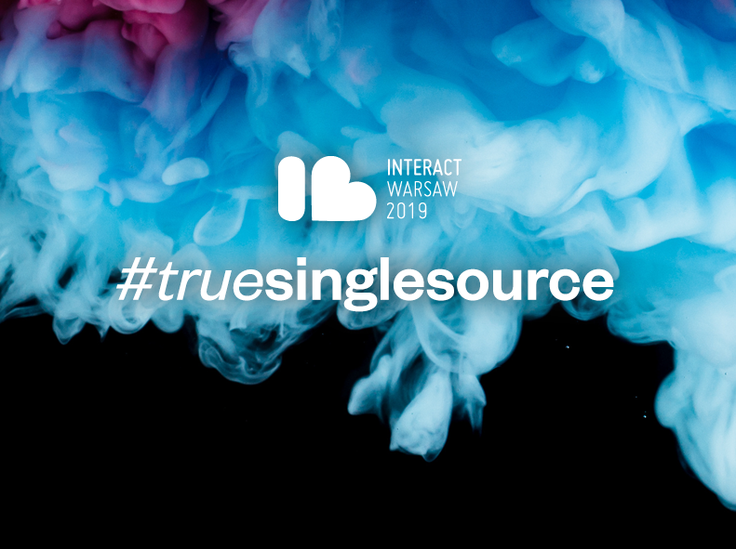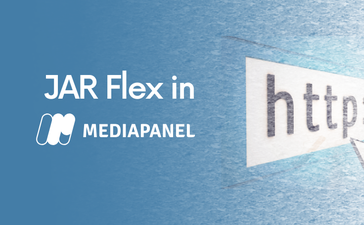
Single source in cross-media measurement
Single source in cross-media measurement: The Holy Grail or a mythbuster of growth?
“We would move half of our TV budgets to digital… If only we had single source” – digital publishers have heard this story many times while talking to big FMCG sector marketers. It is really hard to imagine a bigger promise of growth; taking over TV budgets was a dream of all digital pioneers. It is enough to have a glance at the gap between digital and TV ad spendings twenty years ago. The distance is immense; like to the moon and back.
It took NASA 9 years and 25 billion dollars to carry out their renowned Project Apollo. Our industry has a Project Apollo of our own, which was a first single source study attempting to merge TV and digital measurement. Founded by the biggest FMCG industry players lasted only three years, bearing very little impact on all involved parties’ ROI. This argument comes up in the discussion on single source study even today as an explanation why we should not even play this game at all. But there is a clear-cut explanation why we very much should.
First of all, technology has altered the game’s rules quite significantly. Back in 2005, when the Project Apollo was introduced, existing smartphone technology was insufficient to handle the endeavours. Let’s be frank, there were no smartphones at all. The first iPhone had been launched in 2007 while first Android device a whole year later. As when it comes to today, we are all well aware how much these little screens have altered media consumption patterns of all users and will continue to do so in the future.
The second argument is that market has changed quite significantly as well. 2005 is a time when Facebook and YouTube were free of advertising, both platforms launched ads as late as 2007. Now, their market share while different across countries is so immense, we are loudly speaking of Google/Facebook duopoly that Amazon and Alibaba are trying to break.
The digital market grew to have finally exceeded TV ad spending in 2017 globally. Even if on the first glance it seems as if only global walled gardens ecosystems take the lion’s share of the benefits, the future does indeed look bright for all digital market players. The rapidly evolving environment makes it impossible to predict the future curve of both these lines.
Dichotomy between digital and traditional media is artificial
Today’s reality presents all media players with a completely new and unknown challenge: how to differentiate between digital and TV. With new platforms and services a clear-cut distinction is almost impossible. Is HBO GO content digital or still TV? Does YouTube and Twitch watched on your flat-screen TV still count as digital? We should stop thinking in direct contradictions now as it certainly will not get any less complicated.
We (as media and advertising industry) created this uneasy status quo by creating separate digital departments in media agencies, by appointing job positions such as Chief Digital Officers; by having media industry committees separate for digital and traditional media. As a result of this pointless division we now have completely separate research studies, different ratings and currencies in each media type silos. Mark Ritson, a renowned lecturer and marketer directly declared this status quo to be “the most probably the most common and preposterous concept in the whole history of marketing”. This status quo does not answer to the fundamental questions that marketers receive from their Sales departments or CFOs: how many people have already seen my campaign? In TV 20M, in digital 15M. All together? It would probably be between 21M and 25M…” The answers like that are too blurred, and insufficient to say the least. They do not support their businesses’ growth.
The market has been striving to deliver the answer to this question since forever. The primary failure of Project Apollogave us the excuse to give up and continuously work with data fusion, still very often based solely on basic demography. The error margin of this method is very high, and in our ever-changing reality it is clearly becoming too high, especially when we take into account the possibility of data manipulation thanks to separate methodologies.
It is high time that we, as the whole market, stop accepting answers so blurry and vague as we can no longer afford it. To quote Tom Goodwin, the head of innovation at Zenith Media soon “there will be no more Chief Digital Officers…We will no longer talk of TV versus online, or mobile versus desktop”. Digital will seamlessly blend into the background. The post-digital era is ahead of us and we can all sense it coming.
Gemius is a digital-native company, prepared for the post-digital age since the very beginning. We have been solving puzzles of digital for 20 years now which made us not only the pioneer, but also the leader in online audience measurement. The ever-expanding complexity of digital environment forced us to go through the process of connecting different data sources: starting from scripts with panel-based data, through cookies deduplication to estimate Real Users, and finally to connect users across different types devices (PC, tablet, smartphone) and different purpose of device’ use (home and work). Four years ago, we received our first IAB Research Award for BPS (Behavioral Panel Synthesis) – at that time it became evident to us that fusing data based on demography is a compromise nobody should accept. The same demography does not equal the same behavior in media consumption. Behavioral data based on single source panel (even if small because of the panel calibration) is “a must have” to provide the answer to the marketers’ ultimate question: how many people have already seen my campaign? and many others that open doors to new media measurement possibilities.


